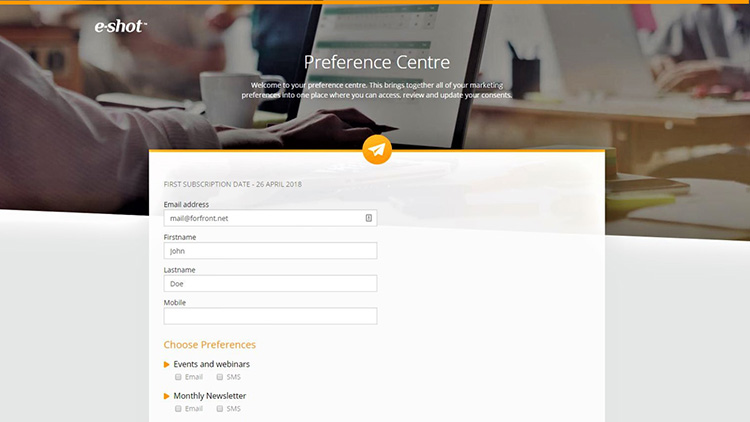Blog
CATEGORY: Data ProtectionBest practiceemail-marketing
The benefit of preference centres under GDPR

Over the last year GDPR has been the main topic of discussion and concern among marketers. With only weeks to go before GDPR comes into effect, email marketers are working hard to get everything in order before D-Day. With lots to think about and plenty to do to prepare, for many preference centres are an integral element.
A preference page gives users an easy way to manage the communication they receive from you. By empowering your users to opt in and personalize their email communications, you can stay GDPR-compliant while improving the user experience.
Let’s look at the added benefits that having a preference centre can bring. Preference centres are generally considered best practice, however in this instance it all boils down to 3 clear benefits:
Contacts are in control of how they interact with your emails, which can increase engagement
You can reduce unsubscribes and complaint rates
Your data will be cleaner and up-to-date if you allow your subscribers to amend their preferences. This is particularly important in light of GDPR
People’s preferences change over time. Maybe their situation changes, and the newsletter they signed up for is no longer relevant to their needs. Whatever the reason, the GDPR says that brands must make it easy for users to change their preferences.
Email preference centres allow you to collect and record the GDPR-mandated explicit consent from your audience. A preference centre provides your audience with an easy way to opt out of communication, but it also gives you the opportunity to catch them at the door and pique their interest in another newsletter.
Audiences may also grow dissatisfied with the frequency of email they receive. If that’s the case, you can also provide the option to opt down from a daily newsletter into a weekly or monthly email instead. When offering choices can mean the difference between keeping subscribers and watching them walk away, preference centres aren’t just simpler for your audience; they’re simpler for you too.
And while we are talking about simple – don’t over complicate your preference centre. The easier you make the process the more engagement you get from users. Clear, concise and easy to follow are what you should be aiming for, to easily enable your users affirmative action.
Ultimately, GDPR is about transparency: companies must be open with their users about data collection. While bringing your brand into compliance may not be easy, the onset of GDPR provides an opportunity for companies to get smarter about their marketing practices.
Preference centres can connect your audience with more relevant content, which can increase engagement, and in turn, their trust in your brand. Transparent opt-in and opt-out practices can also contribute to this trust, which makes preference centres a must.
Solutions
Email marketing healthcheck
We are confident that we can help you, which is why we offer a free healthcheck to identify potential issues with your current programme and free advice on things that could be done to improve it.

